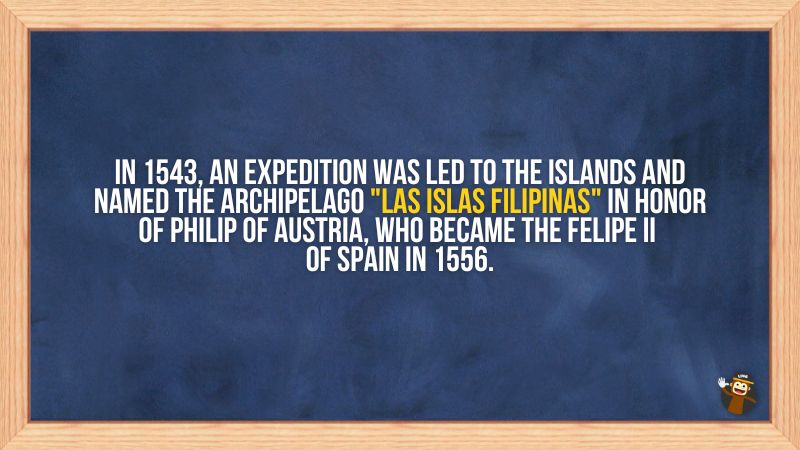Filipino VS Philippino: Have you ever wondered why it is spelled as “Filipino”, not Philippino? The answer can be traced down to their unique history!
The language spoken in Spain is called Spanish. In Japan, it’s Japanese. In China, it’s Chinese. But, how come the official language of the Philippines is Filipino, not Philippino or Philipino? Well, their history, particularly during the Spanish colonization period, has the answer.
Filipino VS Philippino: The Spanish Colonization – King Philip II
Before the country was called the Philippines, this archipelago had no name yet. In 1521, the Spanish reached the archipelago through an expedition led by Ferdinand Magellan, a Portuguese-born Spanish explorer. He established friendly relations with the local leaders and converted some of them to Roman Catholicism. The Spaniards began to explore the whole archipelago. Unfortunately, Magellan was killed by a local ruler, Lapulapu, upon the expedition.

The Spaniards did not stop there and continued to dispatch other Spanish expeditions to the archipelago. In 1543, an expedition was led to the islands and named the archipelago “Las Islas Filipinas” in honor of Philip of Austria, who became the Felipe II of Spain in 1556.
Filipino VS Philippino: How Did It Become Philippines from Filipinas?
Since Felipe is translated into English as Philip, the name of the country is spelled in the Philippines when written in that language. From “Las Islas Filipinas,” it became “The Philippine Islands” in English. Ths Spanish word “Filipinas” was translated to the “Philippines” and now changed to “Pilipinas,” which is used by the locals today.
Filipino VS Philippino: Why Filipino, Not Philippino?
No Suitable English Version

There was never a name in English that was appropriate to describe a Filipino; “Philippine,” “Philippian,” or “Philippinian” just didn’t have the proper ring to them. As a result, the Spanish word “Filipino” was appropriated by the English language, but the letter F and the suffix “ino” were kept.
Following The Tagalog Alphabet
Another factor why Filipino is used between Filipino VS Philippino is the Tagalog alphabet or commonly called Abakada.

The Tagalog alphabet only consists of 20 (twenty) letters. As you can see, the Tagalog alphabet only has the letter “p” which has the sound of “pa”, “pe”, “pi”, “po”, and “pu”. It doesn’t have the sound of “ph” hence the Tagalog word for the country, “Pilipinas”, and the citizens “Pilipino”. The official language of the Philippines was also called “Pilipino” in 1959″ following the abakada but was changed to Filipino in the 1973 Constitution.
It also has the rule of “Kung among bigkas, siyang baybay” which translates to “How you say it is how you spell it.” So, it doesn’t have such thing as silent letters or sounds like “ph”.
The 1973 Constitution
Now, let’s talk about the Filipino alphabet. In the 1973 Constitution, “Filipino” was named the national language, not “Pilipino.” This was reaffirmed in the 1987 Constitution, along with a proposal to strengthen the national language with native languages. The people of the Philippines are also called Filipinos but when it’s translated to Tagalog, they use “Pilipino”.

Now, the official Filipino language recognizes twenty-eight (28) letters in the alphabet. From twenty letters, the Filipino alphabet added eight more letters which are C, F, J, Ñ, Q, V, X, and Z. This makes “Filipino” even more accurate than Philippino or Philipino.
Filipino VS Philippino: What You Need To Remember?
The Philippines was named after King Felipe II of Spain. It was first called Las Islas Filipinas. The Philippines that we know today is just the English version of the Spanish word. Although the Philippines was also colonized by the Americans after the Spanish-American war, the culture, especially the languages influenced by the Spanish remained the same hence the Filipino language.
The Filipino language is the official language of the Philippines that is based on the Tagalog language. The Tagalog language is one of the Philippine languages spoken throughout the archipelago. It is not the national language of the Philippines. Many people are usually confused about the difference between the two, but remember that when talking about the Philippine national language, it’s spelled as “Filipino” with an “F”.
Tagalog is the basis of the Filipino language. To put it in a simpler explanation, Tagalog is the foundation of the Filipino language, and Filipino is the evolution. It includes words from other Philippine languages and foreign words as well. Some might say that they are the same, but they are definitely not. Just take a look at how the alphabet differs.

The languages of the Philippines, Malaysia, and Indonesia all come from the same place. Many basic Malaysian words, like numbers and body parts, sound so much like Filipino that a Tagalog speaker might think they are from another Philippine language when they hear them.
The Chinese brought a lot of words about food, cooking, business, and even family. Hindus and Muslims from Malaysia and Indonesia brought words with roots in India’s ancient Sanskrit language, which have to do with the arts and religion.
The Spaniards brought words related to Christianity, government, and technology. Some basic indigenous words were even replaced by Spanish words over time.
From these roots and influences, you’ll definitely understand why Filipino and not Philippino are used to refer to the language and the people. But you have to keep in mind that even though they have Spanish influences even with their name, the Filipinos have their own identity that they are proud of.
A Language Is Meant To Be Spoken! Learn Tagalog Now!
The Tagalog language has a unique beauty that can be truly appreciated when spoken. So, if you’re fascinated with Filipino culture, learning Tagalog is one of the best things to do. Luckily, Ling App can help you with that.
From the development of language skills down to discovering more about Filipino culture, Ling App has made sure that everything is beneficial. With the fun and engaging lessons and activities, you’ll feel like language learning is like playing a game. If you wish to hear how Filipinos speak, Ling App has high-quality audio recordings from native speakers. No need to bring your books with you because you can simply download the app and start learning anywhere and anytime you want.
Discover the beauty of the Tagalog language. Start your first lesson with Ling App and have a meaningful connection with Filipinos worldwide!


















